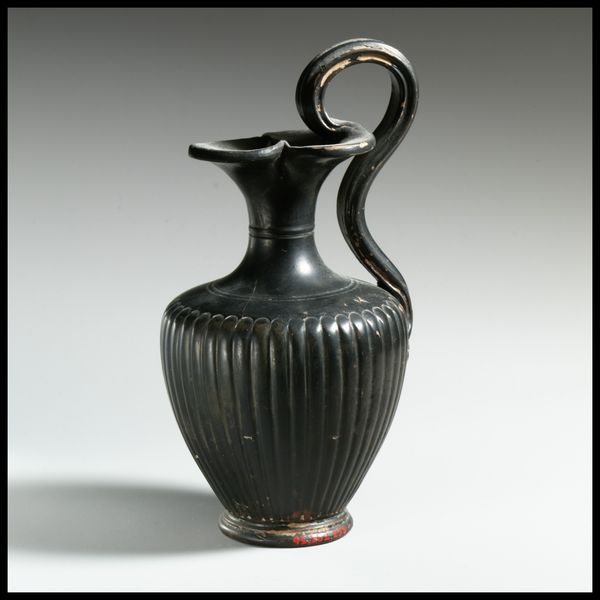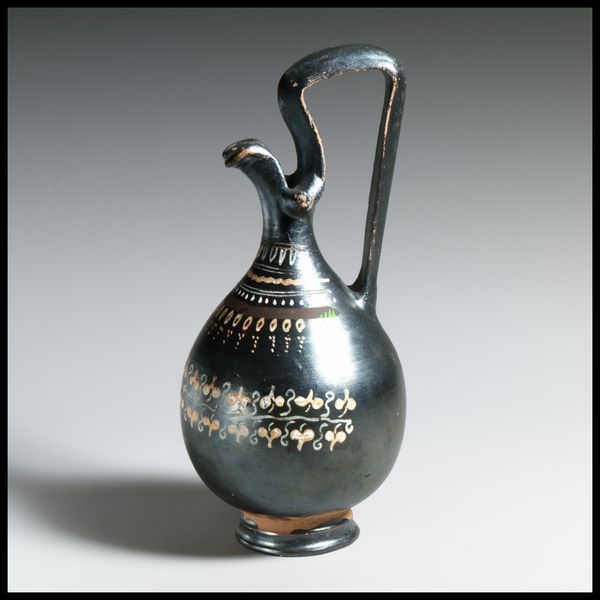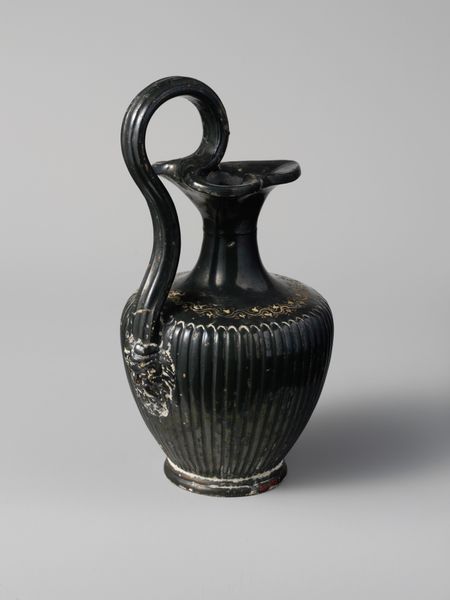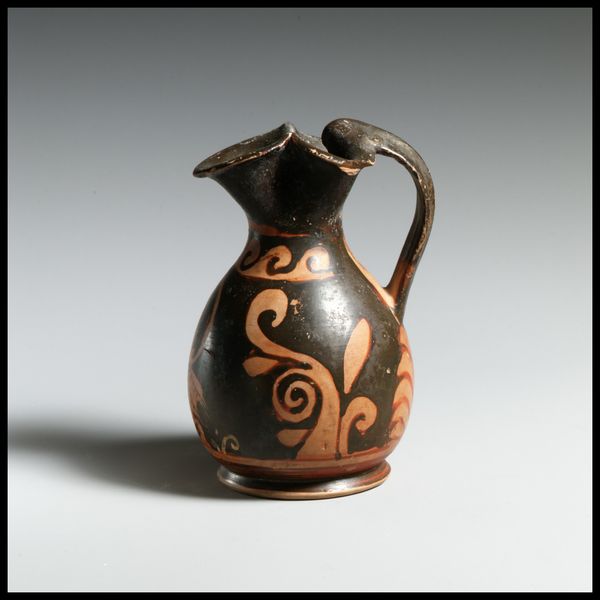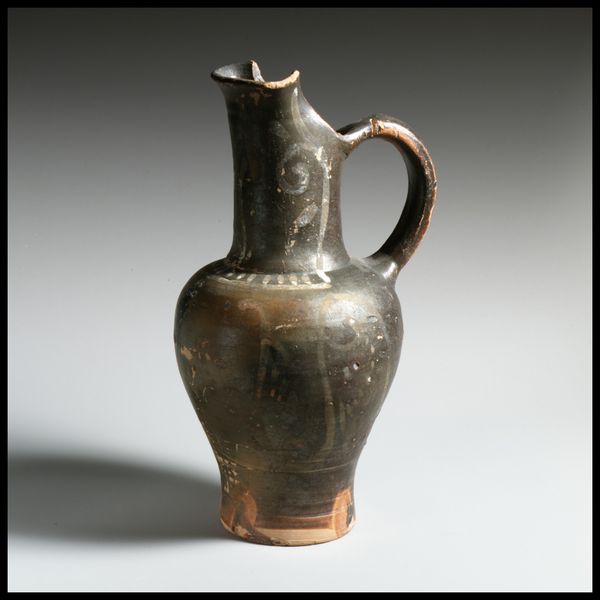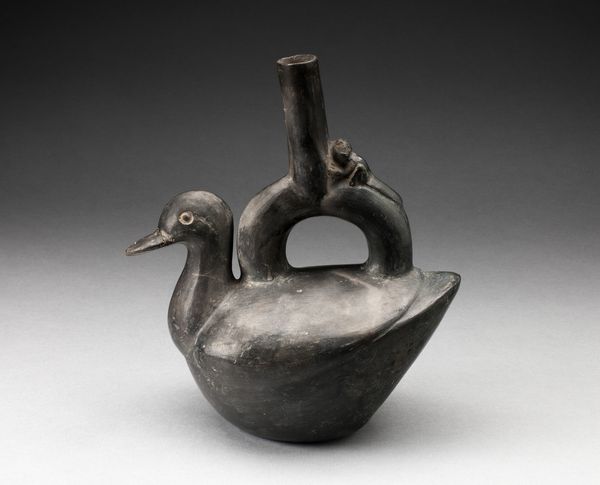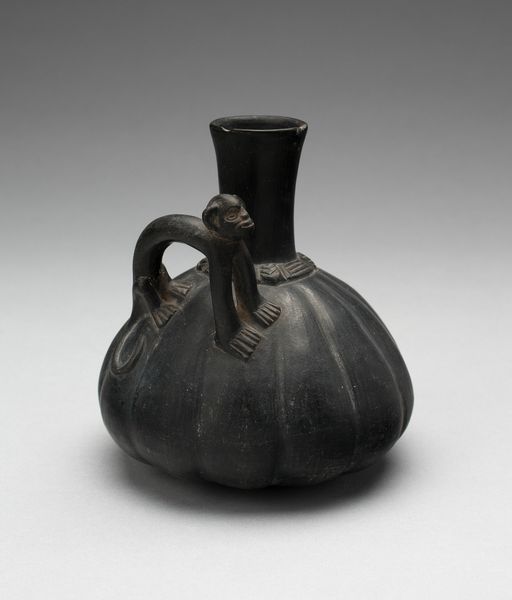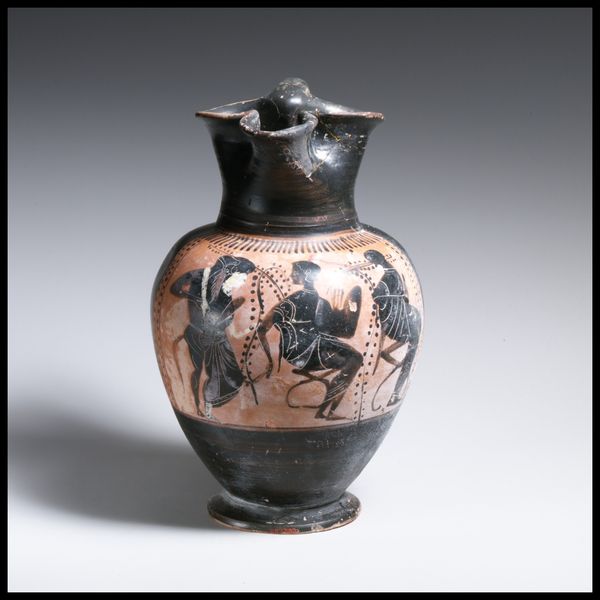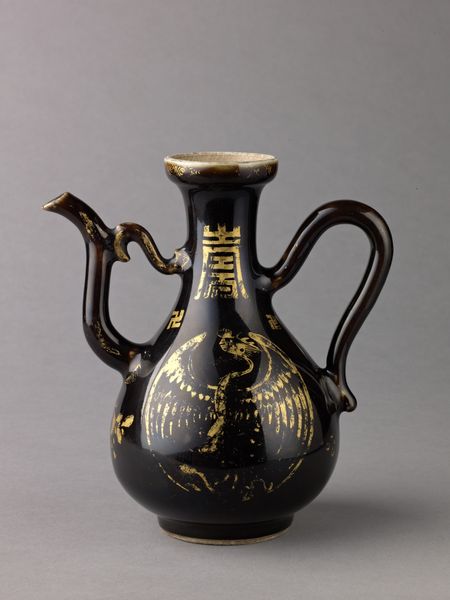
ceramic, sculpture
#
greek-and-roman-art
#
ceramic
#
form
#
roman-art
#
ancient-mediterranean
#
sculpture
#
ceramic
Dimensions: H. with handle 10 in. (25.4 cm)
Copyright: Public Domain
Editor: Here we have a terracotta oinochoe, or jug, dating back to 399 BC. Looking at it, I am struck by the precision of the form and the uniform vertical lines on its body. How would you interpret its function within the culture and art world of its time? Curator: This jug offers a window into Athenian social rituals surrounding wine consumption. Notice the sleek, dark surface. It imitates the appearance of more luxurious metal vessels, democratizing access to refined dining experiences. Editor: Democratizing access, that's an interesting point. But how does the context of where such a vessel might have been used contribute to this democratizing access you are describing? Curator: Symposium culture was integral to Athenian civic life. Vessels like this would have been used during these events. Consider that participation wasn’t exclusively for the elite. Though status still played a role, objects like this jug enabled wider engagement with practices that signified sophistication and cultural belonging. Editor: So the jug itself becomes a signifier, performing a role beyond just its utility? Curator: Precisely. It’s about projecting an image and participating in a shared visual language that reinforced social bonds and conveyed cultural values. Its ubiquity, achieved through terracotta, is key to understanding its social impact. What do you think that says about Athenian society? Editor: I see your point. It is fascinating how a simple jug, readily available, becomes part of complex social dynamics, enabling people to feel they belonged. Curator: Exactly! It is about power, belonging, and the socio-political statement such imagery enables. Objects truly embody history, if we know how to view them.
Comments
No comments
Be the first to comment and join the conversation on the ultimate creative platform.

